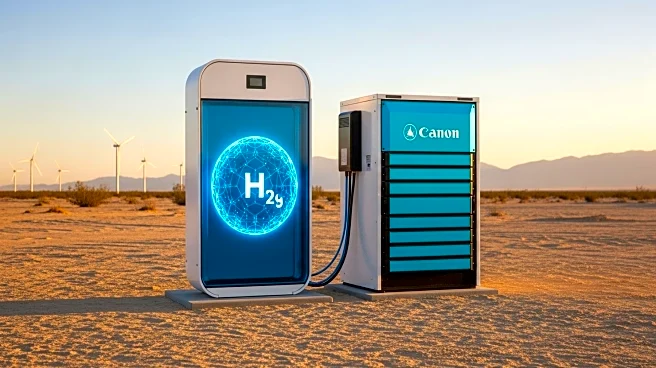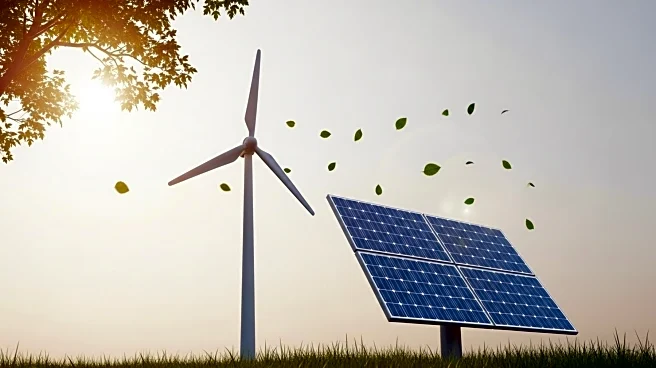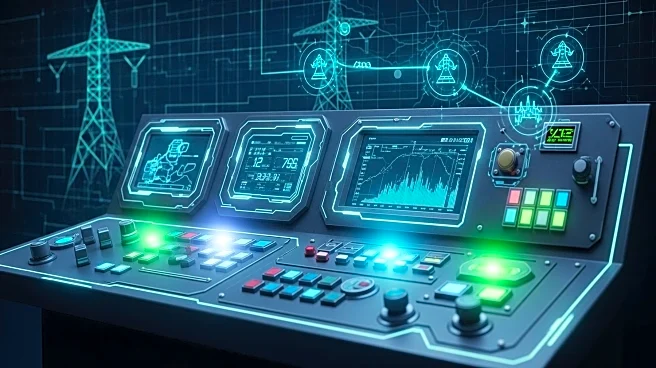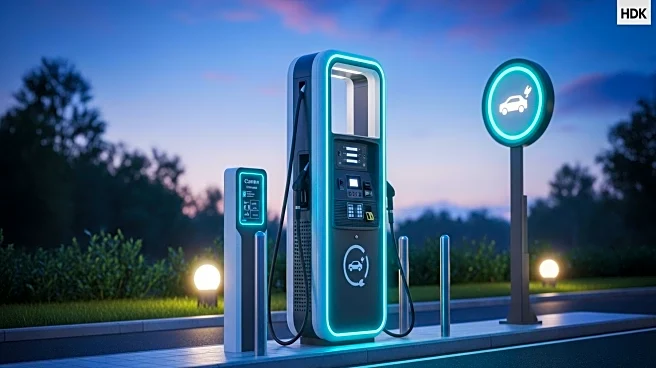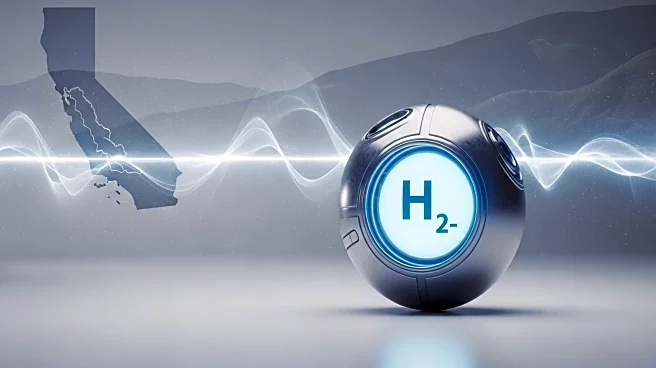What is the story about?
What's Happening?
Pacific Gas and Electric Company (PG&E) and Energy Vault have announced the launch of a first-of-its-kind hydrogen and battery-powered microgrid in Calistoga, California. This innovative system replaces a diesel generator previously used for backup power during public safety power shutoffs. The microgrid utilizes hydrogen fuel cells to charge lithium-ion batteries, providing backup power to the town of 1,600 residents. The site was chosen due to its limited space, which precluded the use of wind or solar power generation. The system can power the town for at least 48 hours, according to PG&E's senior manager of microgrid strategy implementation, Jeremy Donnell. The project aims to offer a reliable and sustainable power solution, especially as demand from data centers and other large-load customers increases.
Why It's Important?
The development of this microgrid represents a significant shift towards cleaner energy solutions, reducing reliance on fossil fuels like diesel. Hydrogen fuel cells offer a lower-emission alternative, which is crucial for communities seeking sustainable power options. The project also highlights the growing interest in hydrogen technology, driven by the need for reliable power with longer duration than traditional lithium-ion batteries. This initiative could pave the way for similar projects in urban areas where space is limited and where diesel generator noise and emissions are a concern. Additionally, the preservation of tax credits for hydrogen storage infrastructure and fuel cells under the One Big Beautiful Bill Act further supports the expansion of such technologies.
What's Next?
While PG&E does not plan to replace all its diesel generators with fuel cells, the Calistoga project provides valuable insights into integrating similar systems into the grid. As demand for natural gas grows, more sites could adopt fuel cell technology, utilizing natural gas instead of hydrogen to avoid on-site emissions. The success of this project may encourage other communities to explore hydrogen and battery microgrids, especially with the support of tax incentives. Stakeholders in the energy sector will likely monitor the project's performance and consider its implications for future energy infrastructure developments.
Beyond the Headlines
The shift towards hydrogen and battery microgrids could have broader implications for energy policy and environmental standards. As communities and industries seek cleaner energy solutions, the adoption of hydrogen technology may influence regulatory frameworks and investment strategies. The project also underscores the importance of innovation in addressing space constraints and environmental concerns, potentially leading to new design approaches for urban energy systems.
AI Generated Content
Do you find this article useful?
